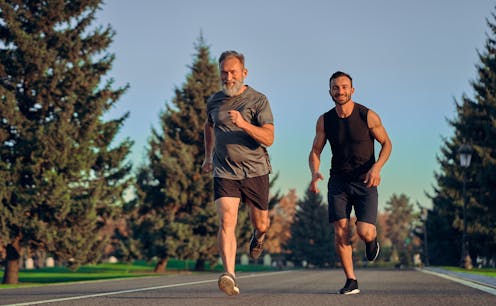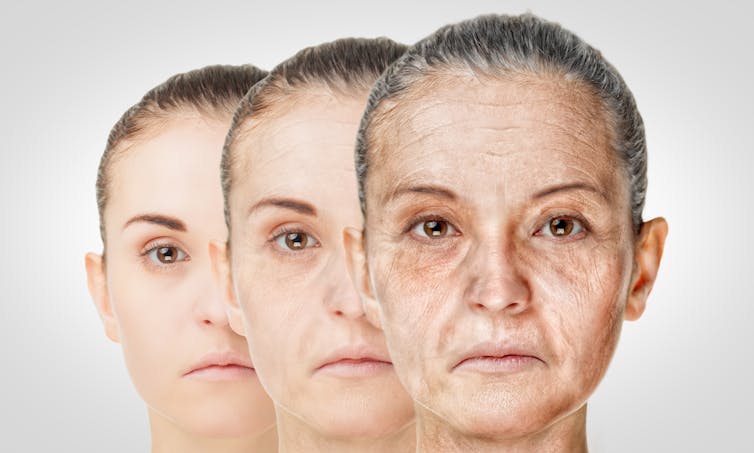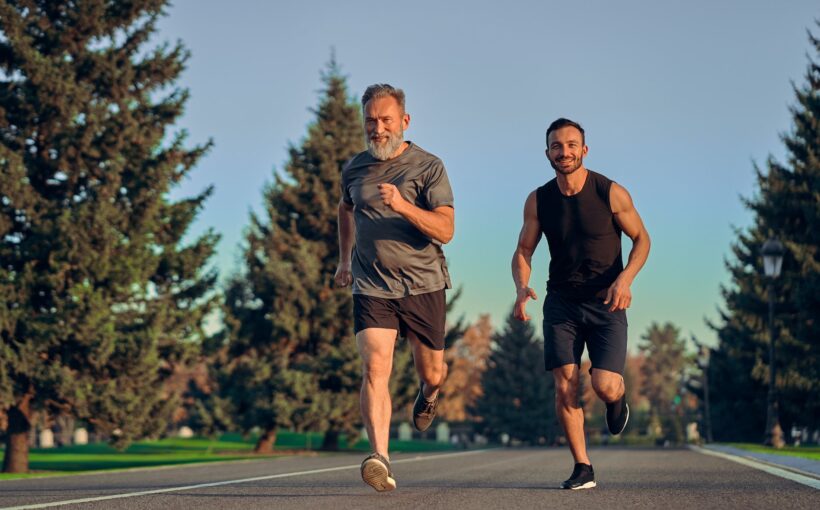
The saying goes that money can’t buy you love. But can it buy you time? This is what US billionaire Bryan Johnson is hoping to find out.
The 45-year-old reportedly spends millions each year in an attempt to reverse ageing and regain his 18-year-old body (presumably sans acne). To achieve this, Johnson sticks to a rigid diet and exercise regime, takes multiple supplements, and has frequent tests to analyse the function of his organs. He’s also tried some novel procedures to rejuvenate his body, such as injecting himself with his 17-year-old son’s blood plasma.
Not only has Johnson’s quest garnered a lot of attention online, it has also left many wondering to what extent his ultimate goal is achievable – can your body really be younger than your calendar age?
There are two interconnected ways of measuring your age. The first is chronological age, which is the easiest to understand. It’s really nothing more than how long you’ve been alive. The most accurate estimate of that is the date and time on your birth certificate.
But, in circumstances where documentary evidence is lacking (typically, archaeological excavations or forensics), there are several techniques available to estimate chronological age. Arguably, the best method is by looking at teeth – specifically, their annual “cemental lines”, which are much like growth rings in trees, alongside changes in the dentine (which sits beneath the enamel and supports tooth structure).
How to measure your ‘true’ age
Biological age, on the other hand, reflects the exponential increase in an organism’s chances of becoming sick or dying with the passage of time. Basically, this translates to the rate at which your body is losing function.
While most species age, there are some rare creatures on the planet that are truly non-ageing – such as the ocean quahog. These have such a low chance of dying that some alive today are old enough that Henry VIII could have eaten them in a bowl of chowder.
Yet, while we all grow older, we don’t all lose functional capacity at identical rates – and the organ systems in our body decline at different speeds. This means that some people’s biological age may be younger or older than the average for their chronological age.
Take the example of the 70-year-old US marathon runner who set a world record for his age group in 2018, and contrast it with many of his peers who are in delicate health or long-term care. This shows how biological age can be uncoupled from chronological age.
There are several ways to estimate biological age. Surprisingly, one of the best is incredibly simple: use your eyes. Research shows that age estimates made by looking at someone are just as good as some more complicated techniques of gauging biological age.
Another study found that smokers, people who were obese, and those in poor health were all perceived as being older than their chronological age by their peers. Given these factors do indeed increase biological age, this shows how accurate just looking at someone can be.

Another simple but powerful predictor of biological age is measuring a person’s grip strength, which tends to decrease with age as they lose muscle mass. Other factors – such as illness, obesity, and lack of fitness – can also affect this. Low grip strength is one sign that your biological age is probably higher than your calendar age.
Other, more complicated methods of estimating biological age include testing multiple organ function and looking at sterile inflammation, which measures how many inflammatory molecules are circulating in the body (a high level is not good news). You could also look at epigentic changes to DNA, the length of chromosomal ends, or the number of senescent cells a person has to measure their biological age. However, the latter two methods typically only provide a rough estimate.
Staying young
If you’re hoping to turn back the clock and “reverse ageing”, the best place to start is by focusing on your lifestyle.
Regular exercise, quitting smoking, drinking in moderation, watching your weight and eating plenty of fruit and veg are all simple things that make a huge difference to your biological age. There’s a roughly 15-year difference in life expectancy between a person who does four of these five things and someone who does none of them.
There are also treatments in development that could rapidly and significantly reverse ageing, if they translate effectively from rodents to humans.
For example, researchers have demonstrated that the accumulation of senescent cells in tissue is a primary cause of ageing in mice. Removing them has shown improvements in both their health and lifespan.
These studies have also compared the effects of removing senescent cells throughout the animal’s life with letting them accumulate, then removing them when the mouse is old. Both interventions improve the health and lifespan of mice – and the latter could justly be described as “reversing ageing”.
Many attempts are ongoing to duplicate these effects in humans, while a range of other techniques to improve late-life health are also being studied. Success with any of these could dramatically reduce healthcare costs and revolutionise how we spend our later years.
In my view, Johnson’s attempts to reverse ageing are something of a mixed bag of the practical and the hopeful. However, achieving his long-term goal of reaching the age of 200 might be a tad optimistic.
![]() Richard Faragher is co-Director of the BLAST Healthy Ageing Network and a co-ordinator of the UK Ageing Research Networks (UKAN). He receives funding from the Biotechnology and Biological Sciences Research Council and the Medical Research Council. He serves on the Scientific Advisory Board of the Longevity Vision Fund and is a member of the Board of Directors of the American Federation for Aging Research.
Richard Faragher is co-Director of the BLAST Healthy Ageing Network and a co-ordinator of the UK Ageing Research Networks (UKAN). He receives funding from the Biotechnology and Biological Sciences Research Council and the Medical Research Council. He serves on the Scientific Advisory Board of the Longevity Vision Fund and is a member of the Board of Directors of the American Federation for Aging Research.



